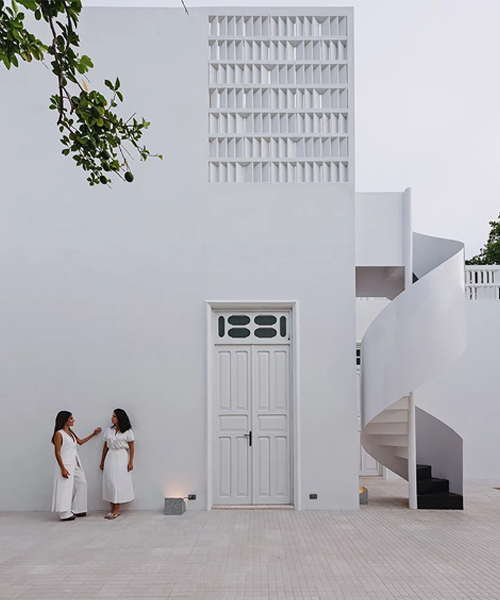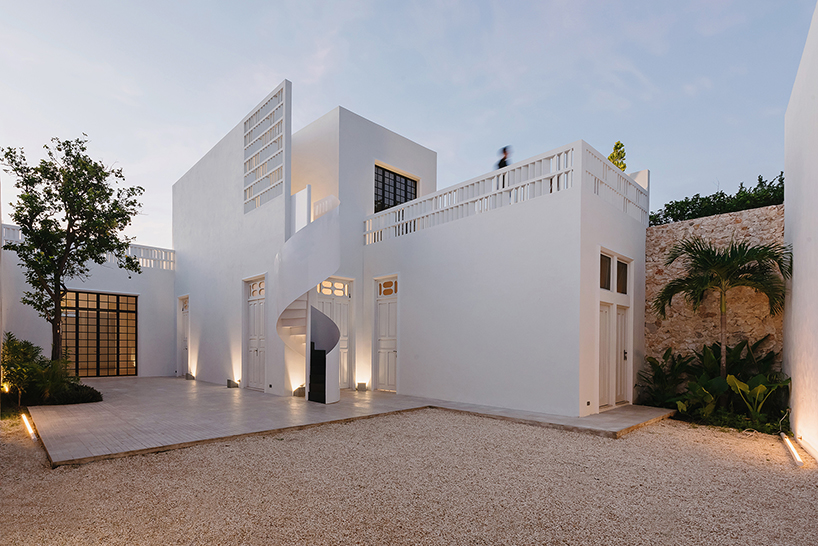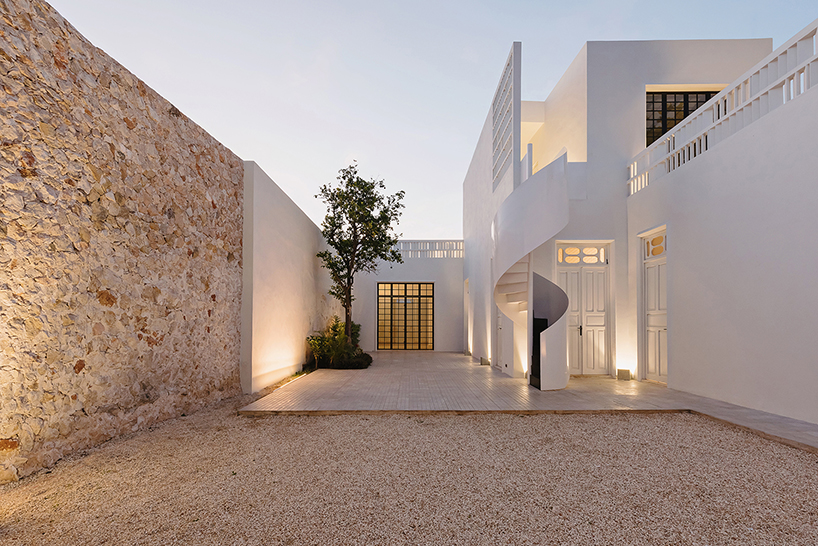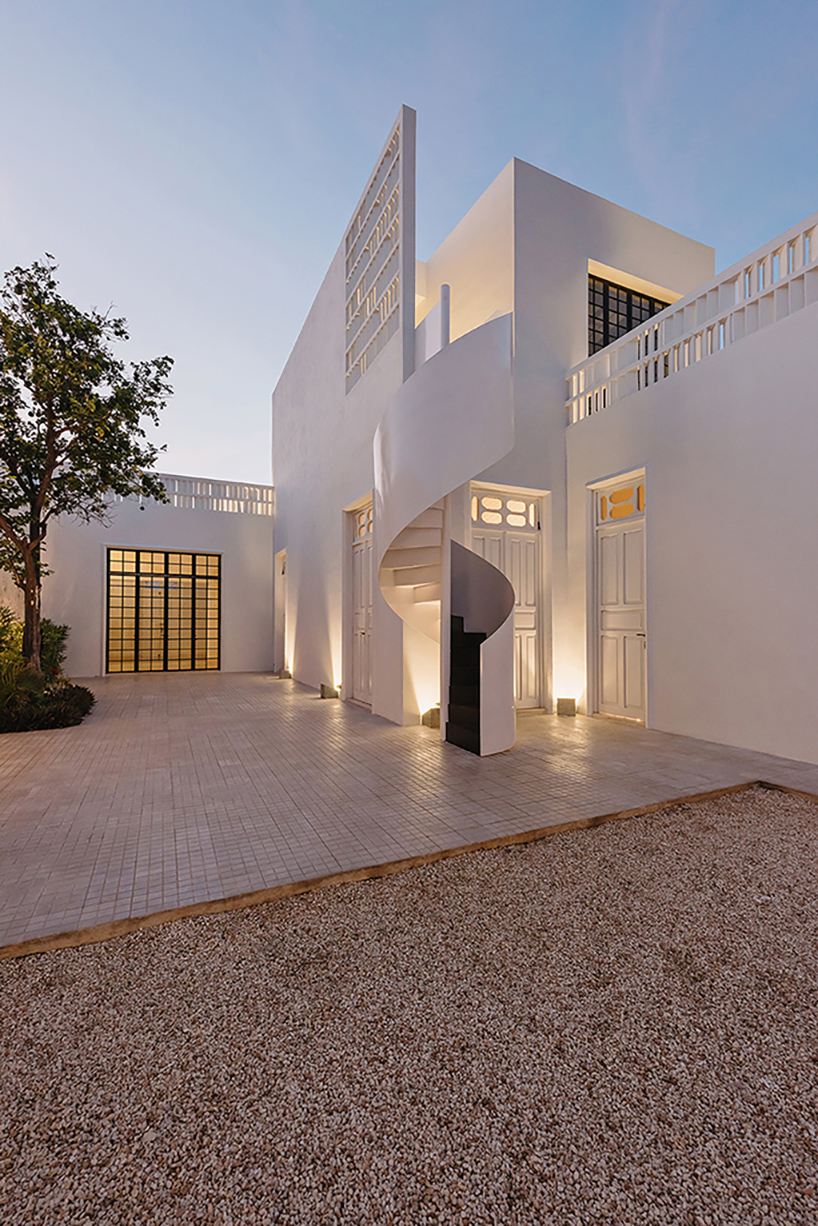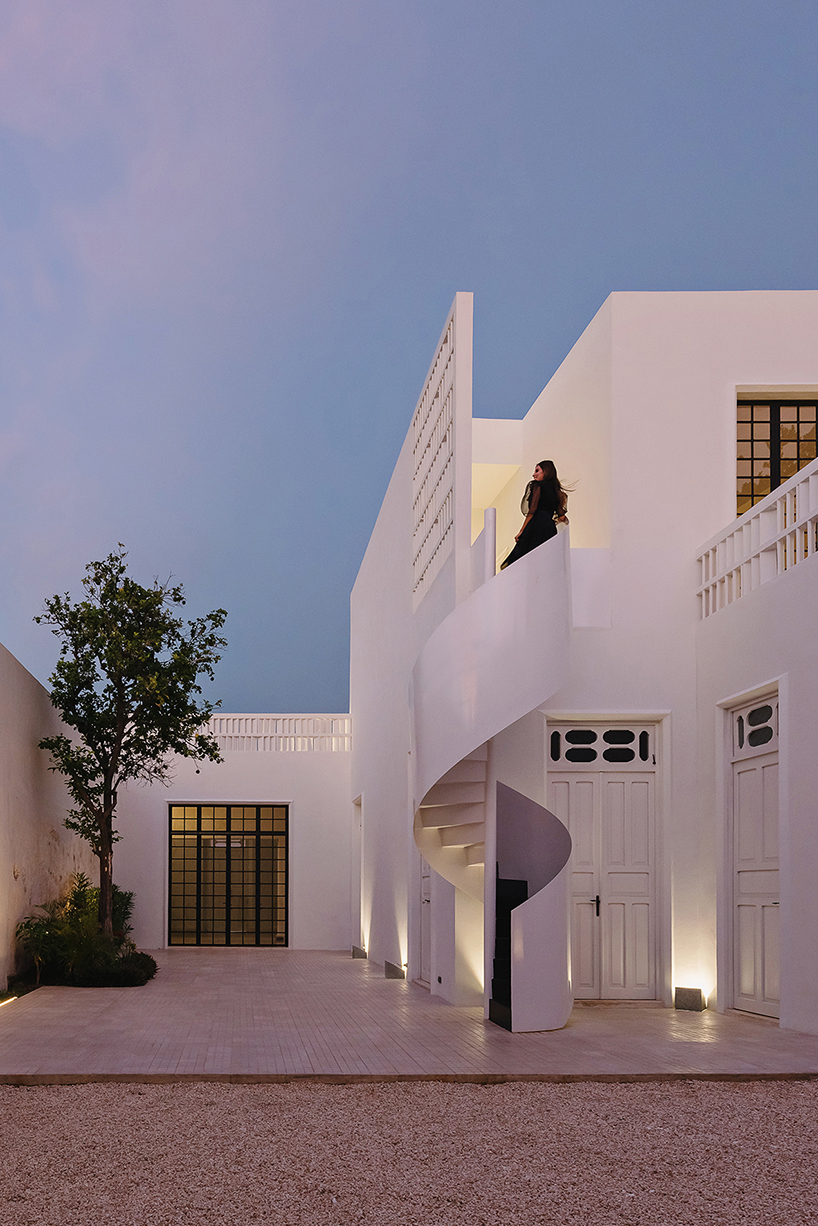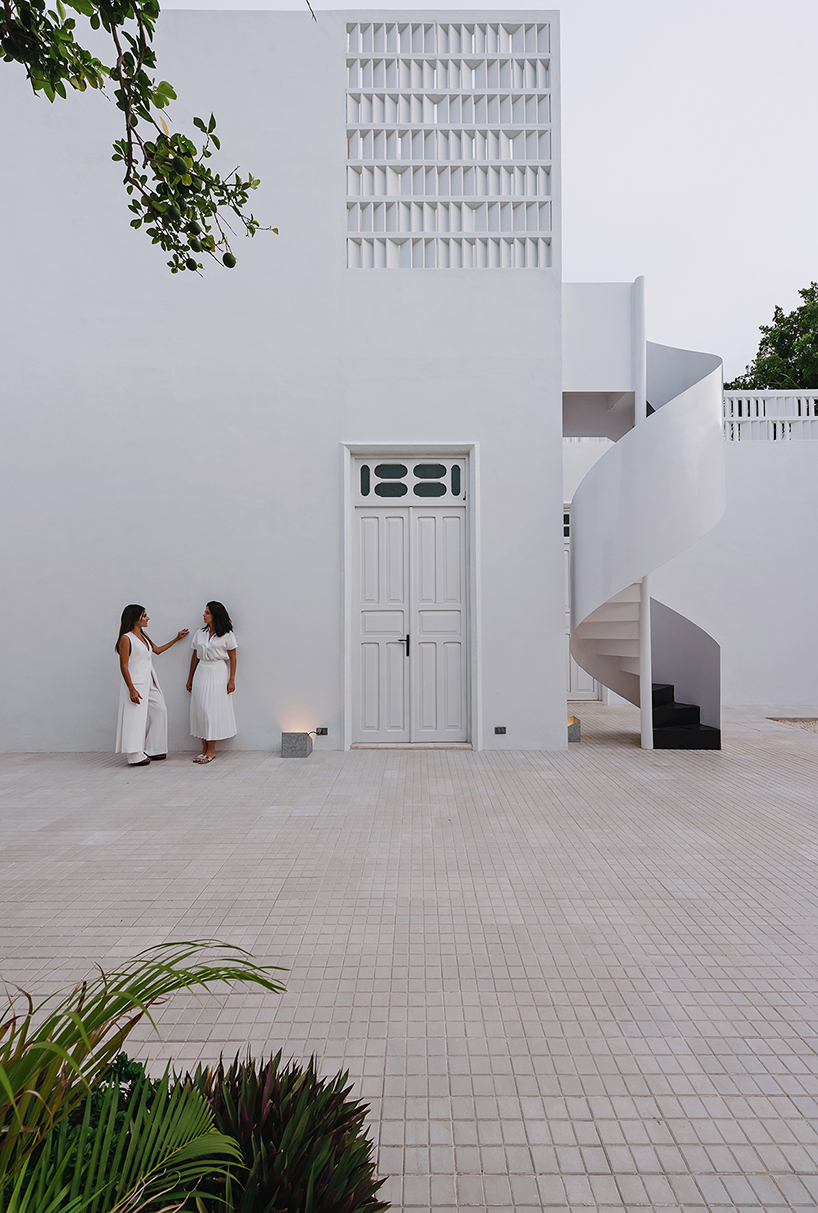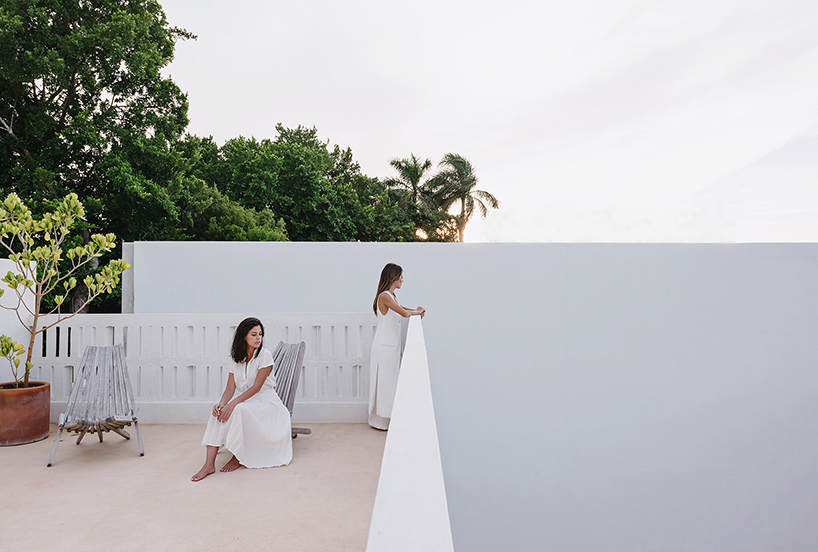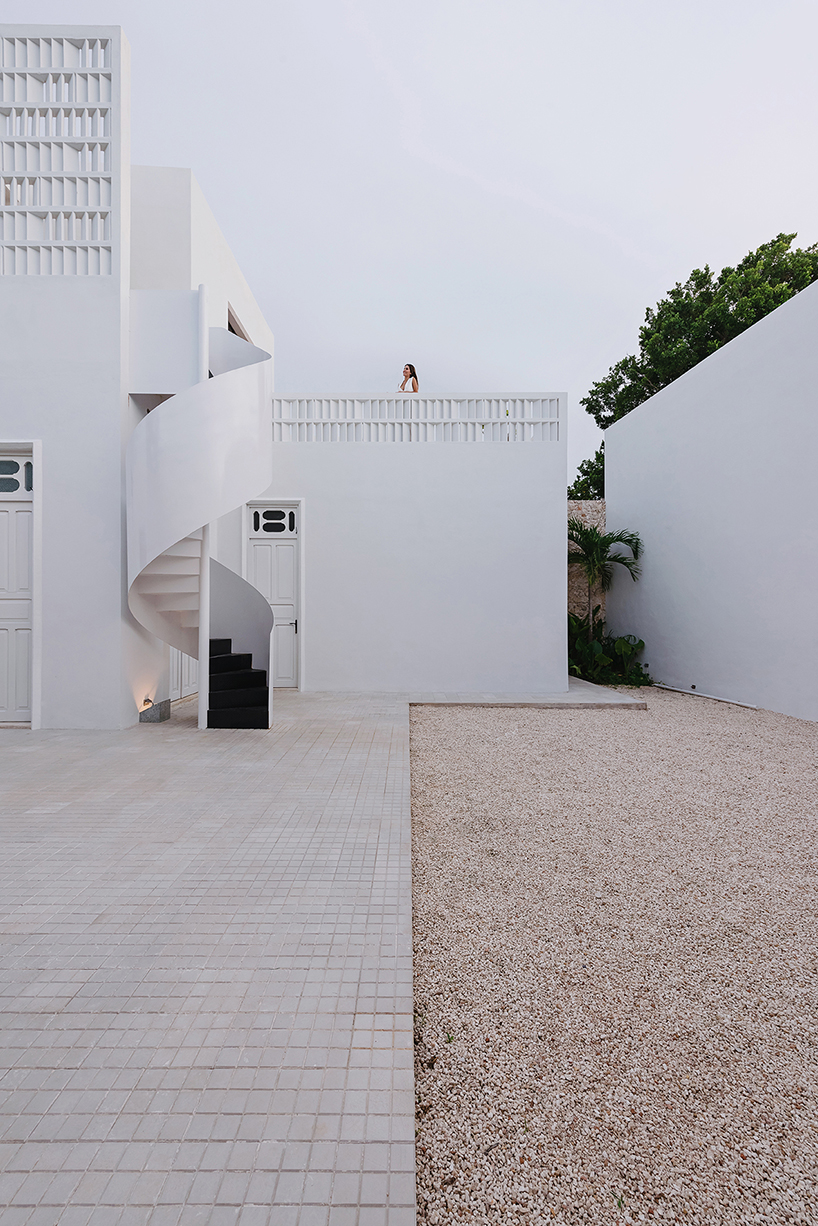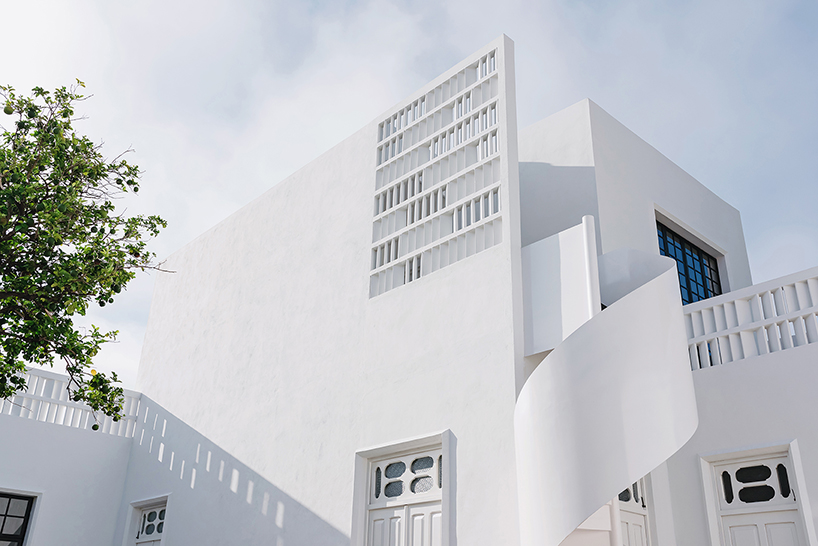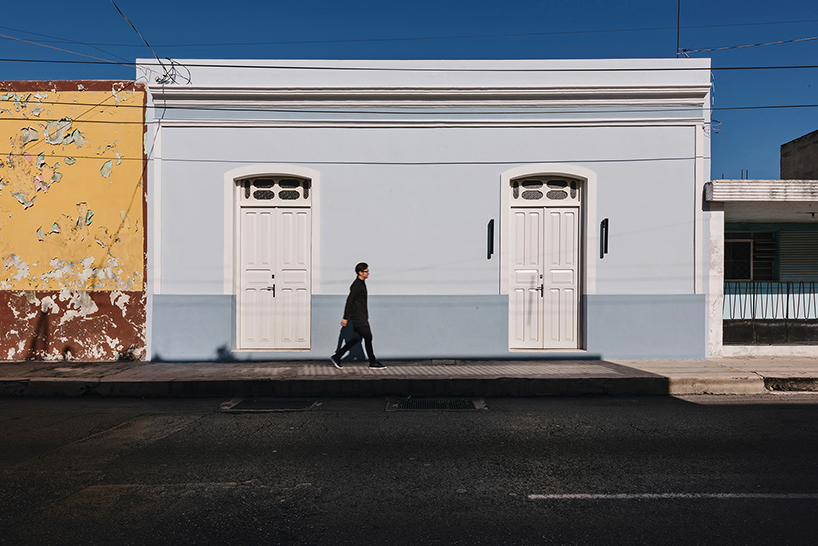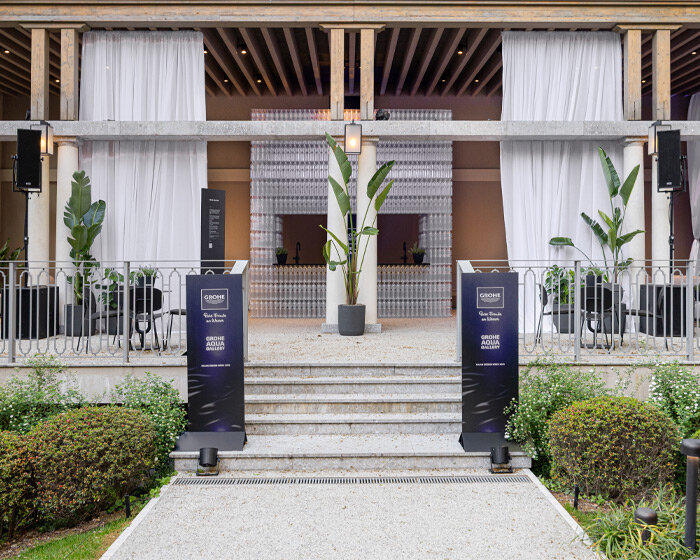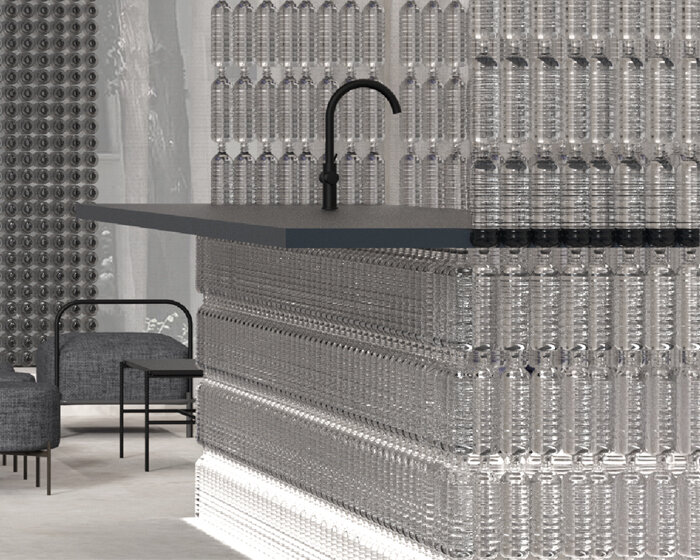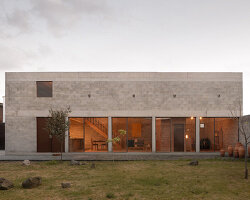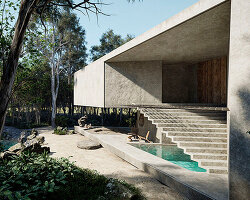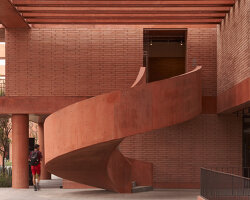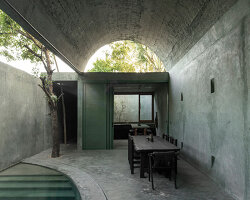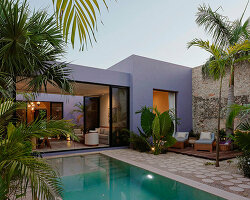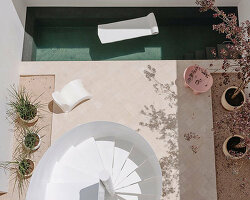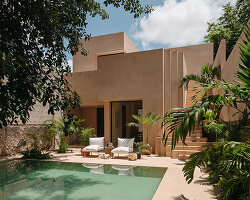in the mexican city of merida, workshop architects has created the filux lab – a new art laboratory for the international festival of lights mexico, or filux. to form the new program, the project sees the transformation of an existing colonial house. using this building as a base for the design, the architects have realized a flexible space that works as a gallery, as a workshop and as a place of coexistence, camaraderie and research for artistic purposes.
main terrace of filux lab
all images courtesy of workshop architects
filux lab serves as an independent space to consolidate the ‘sense of artistic community’; as a meeting point between artists, experts and the public. the initiative’s international program is based on experimentation, production, promotion and exhibition of cultural projects which take light and cinema as their starting point. in this way, it establishes itself as a global reference from mexico to the world.
general view of filux lab
to form the new program, workshop architects has retained many of the original features of the building. the ground floor has five rooms, which were part of the structure of the house before the intervention. for example, an edge of antique white mosaics join the old flooring to the new, uniting the past and present architecture together in a space that can be adapted for artistic interventions.
view with light designed by luca salas
the architecture serves as a blank canvas and is defined by white and neutral colors. additionally, no space within the laboratory has fixed lighting. all of the lamps that are used have a connector that can be plugged through electric extension cords from different points, allowing the space to evolve quickly depending on the dynamics each particular user requires.
model in staircase
the back esplanade, with its more modern design, breaks with the traditional reading of the yucatecan colonial architecture. it invites users to experiment with the high walls that are ideal for projections and that, thanks to the different moldings around the openings and the use of lattices in the walls, offer endless options to play with lighting.
detail of doors, moldings, lattice and stairs
during the day, sunlight offers a spectacular play of light and shadows that are projected at different points of the building, and during the night the versatility of artificial lights allows users to create different luminous atmospheres. serving as a blank canvas, essentially going ‘unnoticed’, to highlight the pieces of art in presentations and exhibitions, and, on the other hand, standing out and distinguishing when there is not art on the premises, allows the building to serve dual purposes.
upper terrace
filux labs turns itself into a new work of art every time different forms of lighting are accommodated or used. the second floor has the administrative area that includes offices, a library with a collection focused mainly on light and two terraces, which are accessed via a spiral staircase that crowns the back façade of the building and elegantly highlights the esplanade as a sculpture itself. the space invites all who enter to discover and create new sensory experiences in the universe of light, the universe of filux.
side view of the building
architectural details with sun shadows
street façade in merida’s historic downtown
project info:
project name: filux lab
location: merida, mexico
architect: workshop architects
designboom has received this project from our ‘DIY submissions‘ feature, where we welcome our readers to submit their own work for publication. see more project submissions from our readers here.
edited by: lynne myers | designboom
